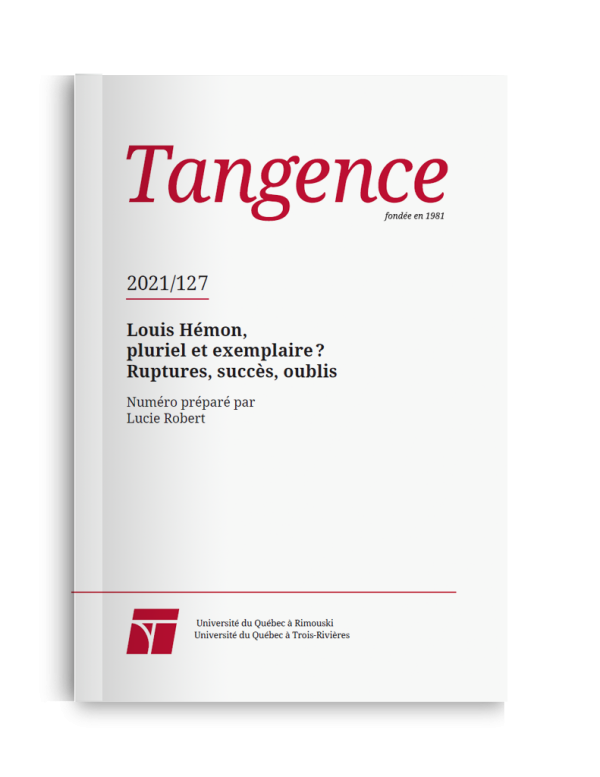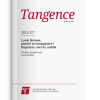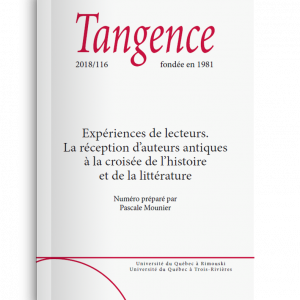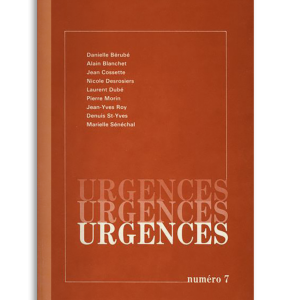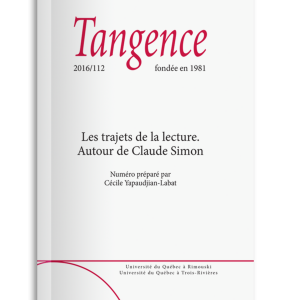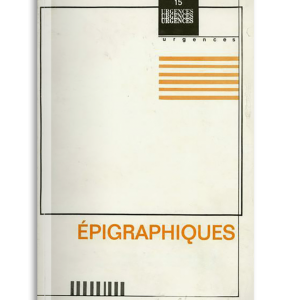Louis Hémon : a versatile writer
Aurélien Boivin
This article reviews Louis Hémon’s trajectory as the author of an oeuvre in many ways overshadowed by his masterpiece, Maria Chapdelaine. His work is discussed here in four parts corresponding to the title adopted : the journalist and passionate sports columnist ; the short story writer, translator of the reality of his time ; the stubborn novelist and his vision of the world ; finally, the intimate writer, as enigmatic as his famous heroine.
Jacques Ferron, reader of Hémon, reader of himself
Betty Bednarski and Susan Margaret Murphy
This joint study examines Jacques Ferron’s (1921-1985) complex attitude towards Louis Hémon and his original and highly personal reading of the latter’s work. Fascinated by Hemon’s biography as much as by his work, and feeling a profound affinity with the man, Ferron was particularly alert to what he considered the autobiographical dimension of the Breton writer’s fiction. We chose to focus on this biographical association, first identifying the elements that led Ferron to see himself in the other writer, then tracing, through his private correspondence and public writings, the development of his “passion” for Hémon. Our discussion concludes with a close study of the complex Hémonian intertextuality running through Ferron’s novel Les roses sauvages, a work where literary criticism is woven into the fiction and where Ferron’s own autobiographical project is enriched by his reading of Hémon’s life and work. The aim is to highlight this important and little studied instance of Hémon’s reception in Quebec and suggest new avenues for interpreting the work of both Ferron and Hémon.
The classicity of Maria Chapdelaine : a textbook case ?
Sylvain Brehm
Louis Hémon’s masterpiece, Maria Chapdelaine, is a classic of Quebec literature. As a result, it is also a school classic. However, given the decisive role of school as an authority for consecrating and transmitting texts, one wonders if, today, Maria Chapdelaine is not a Quebec classic because it is a school classic. After examining this question, we propose two avenues of analysis that enable a modern reading of this work in the classroom and show that its classicity lies in its resonance in contemporary culture.
Maria Chapdelaine in film : good fortune and unfortunate heritage
Germain Lacasse
Louis Hémon’s novel has been adapted several times for film, fiction or documentary by the French, the English, the Quebecois, or all of them at once. The present article describes these adaptations and their critical appreciation at the time of their release and afterwards. The author describes and distinguishes the films of Julien Duvivier, Marc Allégret and Gilles Carle, maintaining that one of Carle’s adaptations is the best. This is not the 1983 film and TV series but rather the 1973 film La mort d’un bucheron. This movie adopts only some of the elements of the novel (the names of the characters, the relationship between father and daughter, between these characters and nature, etc.) but transposes them into a decolonizing scenario where Maria breaks with tradition by exposing the covert social violence in French Canadian society. This revisionist approach seems to have been historically more relevant since this film remains the one most appreciated by critics and historians.
Eutrope Gagnon against Louis Hémon. Myth, folklore and community in Sébastien Pilote’s Maria Chapdelaine
David Bélanger and Thomas Carrier-Lafleur
This article proposes a reading of the latest film adaptation of Maria Chapdelaine (2021) by Québécois director Sébastien Pilote (Le Vendeur, 2011 ; Le démantèlement, 2013 ; La disparition des lucioles, 2018). Pilote places this new screen transposition within the continuum of previous adaptations of the novel (by Julien Duvivier in 1934, Marc Allégret in 1950 and Gilles Carle in 1983), but chooses several different approaches. The filmmaker’s project can and must be understood as an attempt to defolklorize Hémon’s text—a claim also made by Gilles Carle, but in a very different sense—around which an ongoing myth and imagery have been created. This countercurrent reading of a work and its heritage by a contemporary medium, done here in line with literary anthropology, underscores the narrative and ethical tensions of the story and the role of the characters, starting with that of Eutrope Gagnon, historically mishandled by the seventh art, who is now the unexpected but undeniable “hero” of Pilote’s film.
“We need to rescue Maria Chapdelaine !” A history of the Maria-Chapdelaine/Louis-Hémon Museum
Marie-Ève Riel
Addressing the Quebec Cultural Property Commission in 1973, the owner of Aménagements Maria-Chapdelaine asked for recognition of the place where Louis Hémon’s world famous heroine lived. The history of the Maria-Chapdelaine Museum in Péribonka highlights at least two issues concerning : 1) problematic identification with the heroine, negotiated differently depending on the agents and, in particular, by the inhabitants of the region who, whether adulating or denying her, find themselves defending their own identity ; and 2) the evolution of the valuation criteria associated with Hémon’s masterwork, subject, like the others, to economic, political, literary and even personal pressures. More broadly, seventy-five years after the official opening of the Maria-Chapdelaine Museum, what does its history tell us about the literary field in which the novel is read ?
Louis Hémon, the Dreyfus affair, sports and literature
Geneviève Chovrelat-Péchoux
This article examines two short stories published by Louis Hémon, who was twenty years old during the turbulent period of the Dreyfus affair. It shows how writing was the basis of his radical conception of freedom and carried Zola’s legacy. For, marked by this affair at the very start of his career, Hémon distanced himself from his family and, without severing ties, removed himself geographically. Similarly, he kept his distance from Parisian literary salons and their codes. Having conquered the freedom to write, Hémon used his pen to give voice to the have-nots, while remaining aware of their flaws and difficulties.

